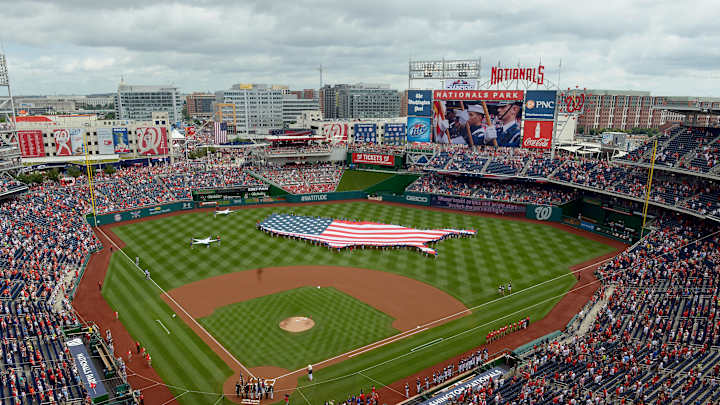Ballpark Quirks: Nationals Park's nods to Washington D.C. history

Ballpark Quirks is a series on the distinctive features and oddities that make up each of MLB’s 30 parks. This week’s pick: Nationals Park.
Nationals Park in Washington, D.C., almost opened in 2008 without its complementary views of the Capitol or Washington Monument.
During the design phase, the prevailing thought was to face the 41,500-seat stadium — situated on 25 acres in Southeast Washington adjacent to the Navy Yard — toward the Anacostia River. But Joe Spear, Populous architect and designer of Nationals Park, told SI.com that for Nationals Park to become a success, the neighborhood about three-quarters of a mile from the Capitol needed to be let in.
“The site was selected by the mayor’s office to add value and create value in that neighborhood,” Spear said. “It was a pretty sketchy part of D.C., and they knew (the park) would attract development.”
Spear, having designed Petco Park in San Diego, also knew that the more neighbors were able to see into a ballpark, the more value was being created. Spear told a story of hosting a D.C. contingent in San Diego to meet with then-Padres owner John Moores, who offered up a tour of the stadium, including its view of the surrounding neighborhood.
“The owner of the Padres said, ‘See those buildings? If they can see even a quarter of the playing field, they can add value,’” Spear said. “That was a pretty effective answer to which way we should orient the ballpark.”
Ballpark Quirks: Yankee Stadium's living museum in Monument Park
With the neighborhood-welcoming orientation agreed upon, Spear then captured views of the Capitol and Washington Monument from within the park, most notably from the upper deck on the first-base side. But with a little American history worked into the view, Nationals Park tucked in a bit more Washington, D.C., stadium history into the park.
Nationals owner Mark Lerner played a role in that too, suggesting a foghorn, located above a ramp on the third-base side, to tie to the park’s Navy Yard location. He also encouraged the use of bluestone for the backstop wall, a prevalent building material in the region, to give the park a D.C.-esque touch.
Inspiration for the overall look of the concrete, steel and glass structure was taken from the East Wing of the National Gallery of Art, and the name itself was the one used in the early 1900s before an early D.C. park was rebuilt and dubbed Griffith Stadium. One other nod to Griffith Stadium, the former home of the Washington Senators? An odd right-angled jog in the right-centerfield fence of Nationals Park, a direct tie to Griffith. It's just one piece in a series of choices that tie Nationals Park to the city it inhabits.
Tim Newcomb covers stadiums, design and gear for Sports Illustrated. Follow him on Twitter at @tdnewcomb.

Based in the Pacific Northwest, Tim Newcomb covers stadiums, sneakers, design, training and technology across all sports.